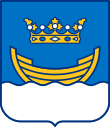Sibelius Monument
| Sibelius monument | |
|---|---|
 | |
| Artist | Eila Hiltunen |
| Year | 1967 |
| Location | Töölö, Helsinki, Finland |
The Sibelius Monument (Finnish: Sibelius-monumentti; Swedish: Sibeliusmonumentet) by Eila Hiltunen is dedicated to the Finnish composer Jean Sibelius (1865–1957). The monument is located at the Sibelius Park (Finnish: Sibeliuspuisto; Swedish: Sibeliusparken) in the district of Töölö in Helsinki, the capital city of Finland.
Description
The monument is a sculpture by Finnish artist Eila Hiltunen titled Passio Musicae[1] and was unveiled on September 7, 1967. The sculpture eventually won a competition organised by the Sibelius Society following the composer's death in 1957. The competition took two rounds after one early winner was abandoned. Originally it sparked a lively debate about the merits and flaws of abstract art and although the design looked like stylised organ pipes it was known that the composer had created little music for organs. Hiltunen addressed her critics by adding the face of Sibelius which sits beside the main sculpture.[2]
It consists of series of more than 600 hollow steel pipes welded together in a wave-like pattern. The purpose of the artist was to capture the essence of the music of Sibelius. The monument weighs 24 tonnes (24 long tons; 26 short tons) and measures 8.5 by 10.5 by 6.5 metres (28 ft × 34 ft × 21 ft).
A smaller version of the monument is located at the UNESCO headquarters in Paris. A work with a similar concept, also designed by Hiltunen, is located at the grounds of the Headquarters of the United Nations in New York City.
Sibelius Park and monument
Kalevala Monument
In 1939, the Leo and Regina Wainstein Foundation organised a competition for sculptors to design a work that depicted a scene from Finland's national epic, The Kalevala, which would be erected in the park. The winner was Aarre Aaltonen (1889–1980) and his entry Ilmatar and the Scaup, a bronze work that was unveiled in 1946.[3]
Images
-
Sibelius Park
-
World War II monument in Sibelius Park
-
President Urho Kekkonen and the artist at the unveiling
References
- ^ Jean Sibeliuksen päivä, suomalaisen musiikin päivä 8.12.
- ^ Grimley, Daniel M. (2011). Jean Sibelius and His World. Princeton University Press. pp. vii, 338 and 353. ISBN 1-4008-4020-1.
- ^ "Sibelious Park". Green Walks.
External links
60°10′55″N 024°54′48.5″E / 60.18194°N 24.913472°E
- Buildings and structures in Helsinki
- Statues and sculptures in Helsinki
- Monuments to composers
- Jean Sibelius
- 1967 sculptures
- Steel sculptures in Finland
- 1967 establishments in Finland
- Outdoor sculptures in Finland
- Monuments and memorials in Finland
- Sculptures of men
- Sound sculptures
- Sculpture stubs
- Finland stubs




